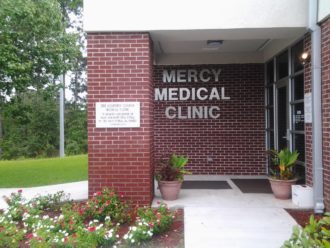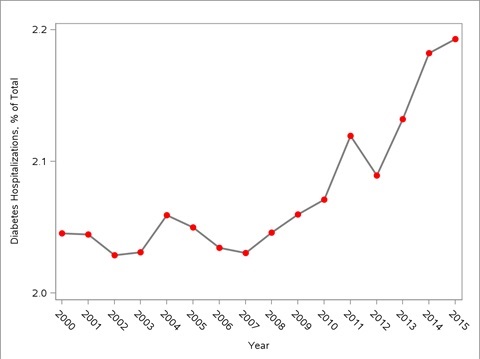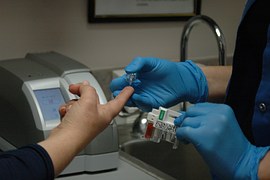Roughly twice a month, a charitable clinic in rural South Georgia gets a referral from a local hospital regarding a patient with diabetes.

In each case, the patient had been treated in the hospital ER, and has no regular access to care.
The Mercy Ministries in Lyons, which serves low-income uninsured people, then accepts that patient into the clinic, providing not only primary care but also an education program to manage the disease.
“When you don’t have health insurance, you don’t see a primary care physician,’’ the clinic director, Carly Benton, said Monday. “You can’t afford medication. Insulin is so expensive.’’
Insulin can run to hundreds of dollars a month, and then there are the costs of supplies to administer the drug. And if that regular care isn’t provided, someone with diabetes that’s out of control can end up in an emergency room.
A recent Emory University study has found that hospitalizations due to diabetes have climbed significantly in Georgia.

And the highest rates of these hospital visits are occurring in rural areas, notably in the central, southern and northwestern parts of the state.
Overall, more than 1 million Georgians have diabetes, with the state increase mirrored by national trends. Part of the surge in diabetes has been linked to the rise in the percentage of Americans being obese or overweight, said Jean O’Connor, chronic disease prevention director for the state Department of Public Health.
An estimated 44,000 Georgians are diagnosed with diabetes every year, she added, calling the disease “an epidemic’’ in the state.
Diabetes patients ‘’should be managed in a primary care setting’’ to prevent a hospitalization, she said. ”Any hospitalization shows something is off’’ in access to care for the disease, she added.
Rural areas have more limited access to care, O’Connor noted.
Managing – or not managing – the disease carries a huge financial price. The total health care cost of diabetes annually is more than $5 billion a year in Georgia, O’Connor said.
Georgia has one of the highest uninsured rates in the U.S.
According to the CDC, 11.6 percent of Georgia adults have diagnosed diabetes, a prevalence that’s 20 percent higher than the national average.

Shivani Patel, an Emory epidemiologist and a co-author of the study, told GHN that “counties where there are higher levels of poverty, unemployment, and housing problems had a greater relative burden of diabetes hospitalization.” Counties with worse availability of healthy foods also had relatively higher diabetes hospital visits, Patel added.
“All of these factors – social conditions, unhealthy food environments and poor quality of care — are problems in rural areas.’’
Prevention and management of the disease are crucial to containing the medical and financial burden that diabetes brings.
Up to 400,000 Georgians have pre-diabetes, which means their blood sugar level is higher than normal but not yet high enough to be type 2 diabetes.
Diabetes prevention programs can encourage better nutrition and physical activity as well as health ‘’coaching,’’ O’Connor said. “The majority of the state is underserved’’ in terms of these programs, she said, with most of these resources located in the metro Atlanta area.
In addition, education programs for people to manage their diabetes need to be more available statewide, she added.
Patel said that “given the variability of hospitalizations across the state, we need to cater to the specific needs of each community to identify appropriate strategies.’’
At the Mercy Ministries clinic, one of three of its patients are diabetic, Benton said.

They are required to attend weekly education classes for a month. Because of that help and regular care, the clinic’s patients “are admitted [to a hospital] less for diabetes,” Benton said.
“That’s a big win’’ for such clinics as Mercy, she added.

